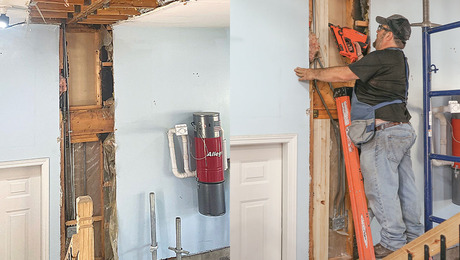Hi I am new to this forum but not new to construction. I am building a two story building in Ecuador. The second floor will be rebar and cement with cement blocks set in twos to keep the weight down, it will be 20 cm thick. This is how we do it here and this isn’t my first slab. My question is. this time the slab is 25 meters long and 14 meters wide. We don’t have cement trucks or pumpers, just a mixer and people. I don’t think we can do it in one pour. Would there be a problem if I pour half of it then in a month pour the other half?
Discussion Forum
Discussion Forum
Up Next
Video Shorts
Featured Story

Don't buy in to the TV show nightmares—when you uncover something unforeseen on a remodeling project, take these steps to keep the process moving and fix the issue.
Featured Video
How to Install Exterior Window TrimHighlights
"I have learned so much thanks to the searchable articles on the FHB website. I can confidently say that I expect to be a life-long subscriber." - M.K.














Replies
Actually, you're far more familiar with construction techniques there than anyone here is apt to be. Probably better to ask others in your area, and use your own judgment.
But if you want input from here you might want to describe in a little more detail what you're doing. Eg, how much support does the roof get (walls, pillars, beams)? Would there be extra support at the seam between the two sections?
Certainly I've seen roofs in Mexico where the edge of the roof has rebar projecting to enable future expansion.
Structure of the slab
There are 21 columns 35 cm square they are approximately 4 meters apart on each column gets 6 14 mm rebar 25cm wide and 15cm thick. Then between the columns is what is called veins which get 2 12mm rebar 10 cm wide and 15cm thick spaced at 50cm in both direction, crisscrossing.
OK, just thinking out loud here for the purpose of discussion. Reinforced concrete is structurally sound when it is designed properly. That means that all the tensile load is taken by the steel reinforcement. The concrete itself, only absorbs compression loads. So... it doesn't matter how many times the concrete placement is interrupted. Cold joints are not weak in compression. It's like two rocks placed side by side. Both can easily push against each other. The steel bonds to the concrete and holds that mass together to absorb compression as well as taking the tensile load.
If my reasoning is sound (truth be told.. I haven't given this a whole lot of thought) you can break your mud placement at will with no loss of structural integrity.